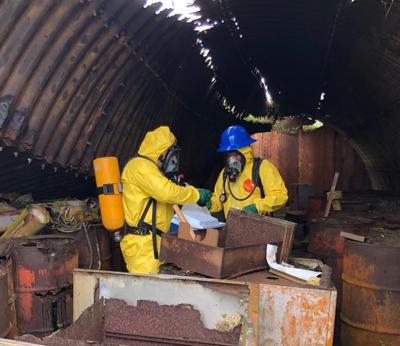Decades of unconfirmed reports, official denials and unanswered questions about whether a deadly chemical was used on Guam have all been addressed in a new federal law.
President Joe Biden, on Thursday local time, signed the Sergeant First Class Heath Robinson Honoring our Promise to Address Comprehensive Toxics, or PACT, Act.
The legislation expands benefits and services for veterans exposed to burn pits and other toxic substances, including herbicide exposure coverage for Vietnam War veterans who served in Guam, American Samoa, Johnston Atoll and other locations.
Among the so-called rainbow herbicides - chemicals used to clear vegetation during the Vietnam War - Agent Orange is perhaps the most well known, and has been linked to several diseases.
Agent Orange is composed of equal parts 2, 4-D and 2, 4, 5-T – both common herbicides until the U.S. Environmental Protection Agency halted all use of 2, 4, 5-T in the 1980s over toxicity concerns. The manufacture of 2, 4, 5-T at high temperatures is associated with an extremely toxic byproduct known as 2, 3, 7, 8-TCDD, more commonly referred to as TCDD dioxin.
Debate, denial
Whether Agent Orange had been used on Guam was the subject of long-standing debate, and a pertinent question not only for veterans seeking service recognition for illnesses, but for the island as a whole.
The federal government for years denied Agent Orange use on Guam.
But how does that fare with the PACT Act now in tow?
"I think you have to see it as an admission that Agent Orange, or at least some sort of herbicide, was used on Guam," said attorney John Wells, a retired U.S. Navy commander and chairman of Military-Veterans Advocacy Inc.
What is certain is that the components of Agent Orange were used on Guam. In late 2018, the U.S. Government Accountability Office reported that at least one ship carrying Agent Orange stopped at Apra Harbor en route to Vietnam more than 50 years ago. While the GAO reported that no evidence indicated the cargo was offloaded on island, the report did acknowledge, through various military records, that Agent Orange components 2,4-D and 2,4,5-T were used on Guam in commercial herbicides.
Soil testing initiatives have since taken place.
But, according to Wells, whether a tactical herbicide, such as Agent Orange, or commercial herbicides were used on Guam, doesn't really matter. What is important is the chemical composition of the herbicide.
"This whole tactical/commercial thing is a red herring. The original agent orange accent, if there is a herbicide that contains 2,4-D and or dioxin, it’s considered to be harmful. The use of the herbicide i.e. tactical or just as a weed killer is really irrelevant. It is the chemical composition that is critical. It's the chemical composition that has harmed and killed people," Wells said.
Military-Veterans Advocacy praised the enactment of the PACT Act.
"The PACT Act provides benefits for burn pit victims, radiation cleanup veterans and those exposed to Agent Orange in Guam, American Samoa, Johnston Island, Thailand, Laos and Cambodia. It also provided for relief of the victims of Camp Lejeune water and requires a study on Fort McClellan veterans," the group stated in a release.


